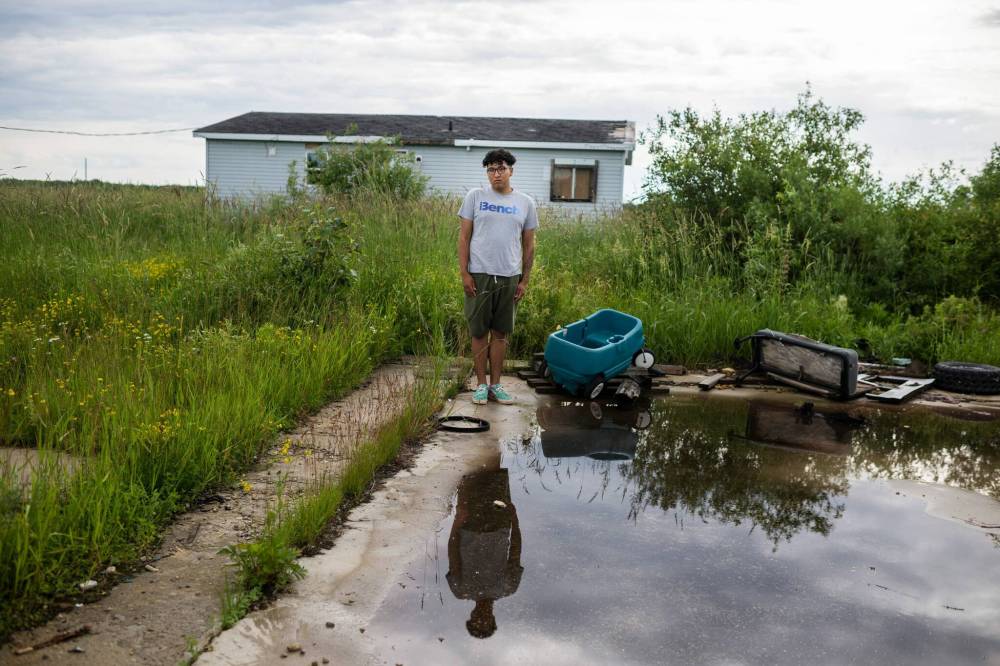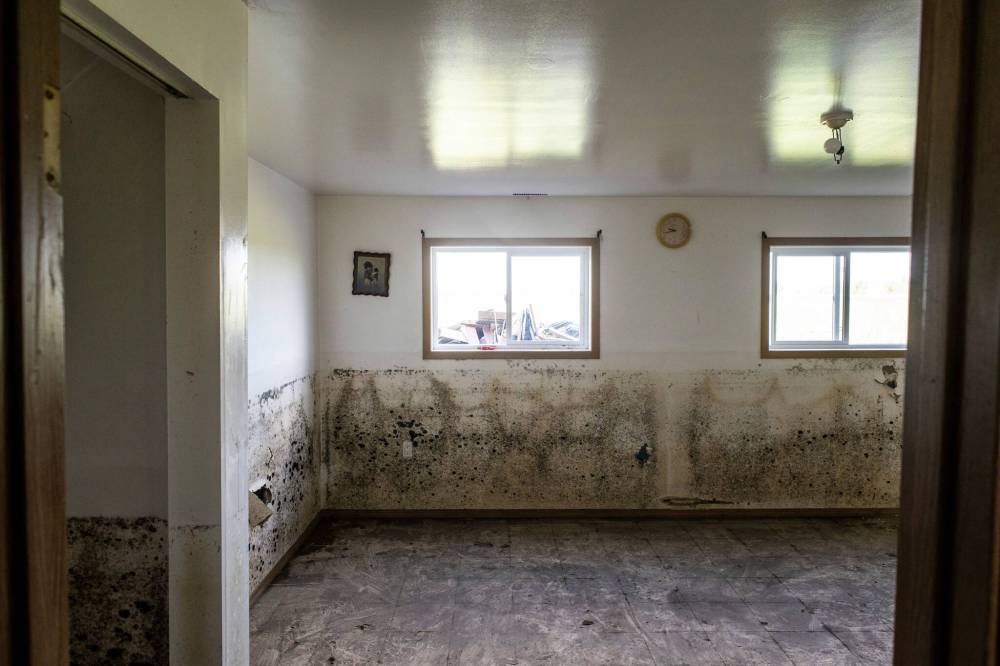Ottawa plans fall flood-mitigation talks
Aims to prevent devastating floods at Peguis First Nation
Advertisement
Read this article for free:
or
Already have an account? Log in here »
To continue reading, please subscribe:
Monthly Digital Subscription
$0 for the first 4 weeks*
- Enjoy unlimited reading on winnipegfreepress.com
- Read the E-Edition, our digital replica newspaper
- Access News Break, our award-winning app
- Play interactive puzzles
*No charge for 4 weeks then price increases to the regular rate of $19.00 plus GST every four weeks. Offer available to new and qualified returning subscribers only. Cancel any time.
Monthly Digital Subscription
$4.75/week*
- Enjoy unlimited reading on winnipegfreepress.com
- Read the E-Edition, our digital replica newspaper
- Access News Break, our award-winning app
- Play interactive puzzles
*Billed as $19 plus GST every four weeks. Cancel any time.
To continue reading, please subscribe:
Add Free Press access to your Brandon Sun subscription for only an additional
$1 for the first 4 weeks*
*Your next subscription payment will increase by $1.00 and you will be charged $16.99 plus GST for four weeks. After four weeks, your payment will increase to $23.99 plus GST every four weeks.
Read unlimited articles for free today:
or
Already have an account? Log in here »
Hey there, time traveller!
This article was published 29/08/2022 (1198 days ago), so information in it may no longer be current.
OTTAWA — The federal government will finally start talks this fall aimed at preventing constant, devastating floods at Peguis First Nation, which have left people stranded for as long as 11 years.
“And a lot of us are falling through the cracks,” said Dysin Spence, who was first evacuated from Peguis in the 2014 flood at age 11.
The 20 year old hasn’t had a permanent home since then, roving between hotels, subsidized apartments — and relatives’ homes when evacuee subsidies ran out.
AARON VINCENT ELKAIM / THE NARWHAL ‘We’re being neglected by basically all levels of government, including chiefs and council,’ says Dysin Spence, seen here in July outside the now condemned Peguis home where he grew up.
In the past year, he’s moved five times, and roughly a dozen more in the previous eight years.
“For all of us it’s just been stressful trying to start all over again, all these years, losing all our furniture and moving,” said Spence, who calls the experience reminiscent of the intergenerational trauma of relatives being forced into residential schools.
“The flood this year was so bad, and it’s a lot of trauma that is just restarting again.”
Peguis was evacuated in the spring for the fifth time since 2006 due to major flooding, while southern Manitoba communities relied on dikes to keep people in place.
Peguis First Nation is Manitoba’s most populous band, and it is located in a flood-prone area 180 kilometres north of Winnipeg, due to a historical swindle that courts have deemed illegal.
In 1907, the Crown ordered the Peguis band to move from the settlement it had established in Selkirk in the early 1800s, known as the St. Peter’s Reserve, to its current location in Hodgson.
In May, federal Crown-Indigenous Relations Minister Marc Miller called the arrangement “a shameful part of our history” that “forces us as a government to be rightfully more understanding” of demands for flood prevention.
But Ottawa’s focus has since been on dealing with the fallout of this year’s flooding.
As of last Friday, Peguis has assessed 206 of 500 homes, leaving 900 people waiting to return after the evacuation that began in April.
AARON VINCENT ELKAIM / THE NARWHAL Flood damage in the basement of Bev and Warren McCorrister in Peguis First Nation last July.
Some of the homes are locked and can’t be entered until evacuees as far away as Winnipeg provide keys or consent to enter.
The homes often need sewer service and drinking water restored and testing for mould, while some homes can’t be repaired because of supply-chain issues.
The band has prioritized getting 100 kilometres of washed-out roads restored so that school buses can fetch students when school starts in the fall.
The goal is to get the 2022 evacuees home within two years — the band’s priority is to first return people who lost their home eight or 11 years ago.
“Nobody is moving fast enough,” said Spence, who is critical of how the band has handled the remediation and return efforts.
“We’re being neglected by basically all levels of government, including chiefs and council.”
His adjustment to life in Winnipeg was rough, feeling separated from relatives and experiencing racism in school, which he says drove him to run-ins with the law as a teenager.
Spence now struggles to find rental units that are affordable under his evacuee stipends but located near jobs. The band and Red Cross haven’t covered damage deposits, meaning Spence has to save up before moving to a new place.
“All of us evacuees are being caught in the middle of all this controversy between the government and the chief and council,” he said.
Peguis Chief Glenn Hudson said federal officials are in touch weekly about looking after evacuees and getting them home, but he has waited for months for talks to prevent flooding in the first place.
“Right now we don’t have an agreement with the federal government for a long-term fix on flooding issues,” Hudson said.
“As First Nations people we deserve a healthy and safe environment just like any other Manitoban.”

While studies have proposed a range of solutions, the community wants a diversion and/or retention ponds put in place to mitigate the impact of flooding.
“We are waiting for the federal government to provide an agreement, stating: here is the scope of work, this is what the cost what we’re looking to fund and, obviously, here is a solution,” Hudson said.
He added that the province would need to help with roads and bridges that lead into the reserve, and help with management of the waterways that he argues cause the Fisher River to overflow and jam with ice.
“We (have) flash flood because of drainage issues that municipalities and the province have put in place south of us,” Hudson alleged.
Indigenous Services Canada said this week it will start talks about preventing floods not just at Peguis, but on other First Nations, as well.
“ISC is establishing a working group with stakeholders and First Nations partners to discuss long-term flood mitigation solutions for First Nations in Manitoba, and specifically Peguis First Nation,” wrote spokesman Nicolas Moquin.
“The first meeting with the working group is expected to occur in fall 2022.”
Manitoba Infrastructure says it wants to be at the table.
“The flooding that occurred in 2022 has reinforced the need to urgently move forward jointly with Canada and all First Nations in the region, including both Peguis and the Fisher River First Nation, to identify and move forward with solutions, both short and long-term, to reduce flood risk,” a spokeswoman wrote.
The fall timeline is way too late for NDP MP Niki Ashton.
“It is shocking that Canada has not been responsive anywhere commensurate to the level of a crisis that Peguis is facing,” said the MP for Churchill–Keewatinook Aski.
She argued that Ottawa’s rhetoric on reconciliation and climate change doesn’t match up when Peguis continues to flood every few years.
“The chronic flooding and historic flooding that we saw this year is a direct result of both colonial decisions that were made — the forced relocation of the people of Peguis — and the absolute result of symptoms of climate change.”
dylan.robertson@freepress.mb.ca






